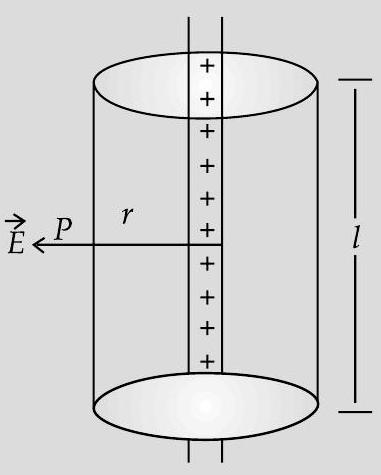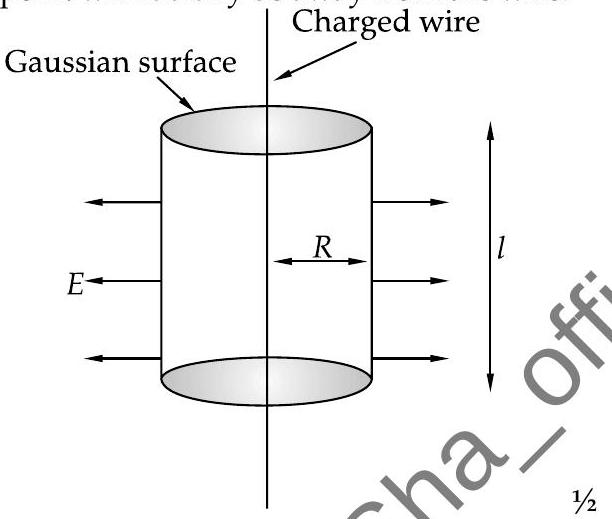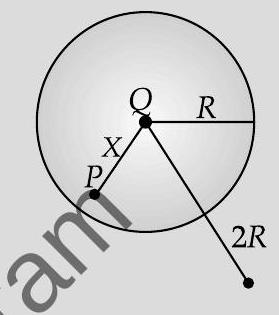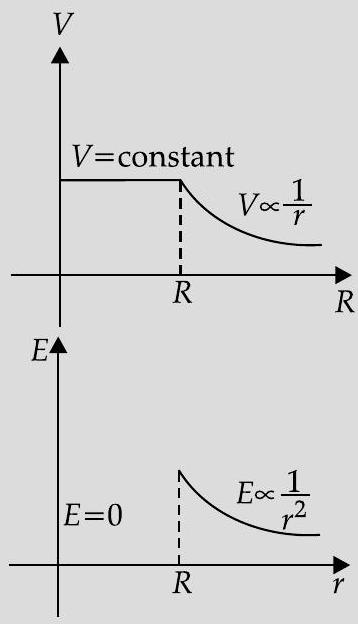electric-charges-and-fields Question 46
Question: Q. 3. State Gauss law in electrostatics. Derive an expression for the electric field due to an infinitely long straight uniformly charged wire.
A&E [Delhi Comptt. I, II, III 2017]
Show Answer
Solution:
Ans. Statement of Gauss Law 1
Derivation of electric field due to infinitely long straight uniformly charged wire
The surface integral of electric field over a closed surface is equal to
Alternatively,

Flux through the Gaussian surface
Charge enclosed by the surface
[CBSE Marking Scheme, 2017]
Detailed Answer :
Gauss Law states that total electric flux over the closed surface
In a long straight wire with uniform charge per unit length

In this, cylindrical gaussian surface is co-axial with the wire of radius
where,
In figure, left part shows electric flux through Gaussian surface while right part shows total charge enclosed by cylinder which is divided by
Further,
Here, the field points radially away from the wire when
Commonly Made Error
- Some candidates do not know the correct expression. Few candidates are not sure about
Show or plot the variation of
Ans. Expression for electric field
Expression for potential
Plot of graph (
Plot of graph
By Gauss law

or
Hence, 
[Even if a student draws
[CBSE Marking Scheme, 2017]






